Experts call Elephant survey in Sri Lanka a farce,condemns govt decision to offer elephants to temples
Even though the national elephant survey has ended with much fanfare and some media hype, questions have now been raised as to whether the Wild Life Conservation Department (WLCD) carried out a full and scientific survey on Sri Lanka’s wild elephants with the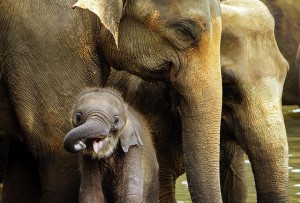 help of experts or whether it carried out a hurried and haphazard head count together with persons linked to a US based circus group and deliberately inflated numbers for political purposes.
help of experts or whether it carried out a hurried and haphazard head count together with persons linked to a US based circus group and deliberately inflated numbers for political purposes.
How did elephant population go up?
Strangely this much publicized first national survey of Sri Lanka ‘s wild elephants conducted from August 11- 14 found more elephants than had been estimated much to the surprise of elephant enthusiasts and environmentalists.
Protest by experts against capture of elephants
With the withdrawal of expertise in the elephant survey at the eleventh hour in protest against Wild Life Minister S.M. Chandrasena’s controversial, ill advised and asinine statement that he intended to capture 300 elephant calves from the wild to be given as offerings to temples; many unskilled people have been used for the survey say environmentalists.
“I was informed by Diyawadana Nilame of Dalada Maligawa that there is a shortage of elephants for perahera,” Minister Chandrasena told journalists in Anuradhapura on August 7, 2011.
“The president has advised me to fulfil that requirement so we hope we’d find strong young elephants that are capable of carrying the casket,” he added.
How accurate was the survey?
According to them, villagers and members from the civil defence and security forces quite untrained in carrying out elephant surveys but capable perhaps of counting numbers were included in the survey team thus raising eyebrows as to how accurate the statistics could be.
Inflated numbers
“We have come to know that the number of elephants given at Yala Nature Reserve was more than double the amount. Why do they inflate the numbers? Was it to show that there was a big increase in numbers which would be a good reason for the minister to justify the capture of calves and tuskers by the WLCD,” they queried.
Rs 25 million spent on the dubious survey
According to the WLCD nearly 4,000 persons have joined the survey team in more than 1,500 locations across the island and an estimated amount of Rs.25 million has been spent on the three-day survey.
Dubious statistics
The statistics according to the Wild Life Minister is 5, 879 elephants which includes 122 tuskers and 1,107 calves and could be used to devise plans to protect the endangered species. Meanwhile Director General of the Wild Life Conservation Department, H.D. Ratnayake told the Lanka Standard that these statistics show a steady increase in wild elephants which is very encouraging.
Untrained foreign personnel
However due to the unskilled personnel used for the survey by the WLCD, environmentalists query on what basis these figures were given. Meanwhile it has now been revealed that the service of certain untrained foreign groups too have been used by the WLCD.
Ringling brothers’ Bruce Reid part of survey team
The finest example was the inclusion of Bruce Reid from USA to the team of expertise for the survey, Sri Lanka’s elephant expert Srilal Miththapala said.
Srilal Miththapala, a keen environmentalist and elephant enthusiast, and also a senior tourism professional now attached to the Ceylon Chamber of Commerce as Project Director of the European Union funded Greening Hotels SWITCH ASIA project, queries as to why Bruce Reid who is a circus man with allegedly a very dubious reputation was included in the survey team.
“What expert knowledge does Reid have on Sri Lanka’s wild elephants? He is a man who has funded various projects in Sri Lanka with ulterior motives, alleges Mithapala.
An extract on Bruce Reid from a google search says thus:
“Ringling Bros. and Barnum and Bailey circus opens this week in Sacramento, despite a federal lawsuit brought by some of the nation’s largest animal advocacy groups, over 100 United States Department of Agriculture citations for deficiencies in animal care and four active investigations into violations of the federal Animal Welfare Act. Ringling is also under fire for its treatment of elephants which are forced to travel thousands of miles confined in train boxcars, beaten with bullhooks, and frequently chained.
Ringling’s V.P. of Animal Stewardship, Bruce Reid, tells the public that bullhooks are used “like leashes for dogs.” API was unable to find a leash at the local pet supply store that was made of wood or metal and featured a sharp, 2-pronged hook at the dog end. We did confirm though, that in California it is illegal to confine or chain a dog in the same manner Ringling does its elephants.”
You can watch more on the recent protests against Ringling brothers on August 17, 2011 in San Jose here
Beaten down
In fact animal activists have accused the Ringling brothers saying the elephants in the circus appear beaten down in the way they respond to their handlers. One activist Deniz Bolbol had recorded a Ringling handler stabbing and jabbing a 7-year-old chained
elephant named Angelica outside of the Oakland Arena as Ringling walked Angelica to the venue to perform. The footage received extensive news coverage. Ringling responded the following year by arresting Deniz for trespassing when she tried to videorecord from the same location, leading to the Oakland civil suit and Deniz winning the right to record outside of the arena.
Shuffled from city to city
Deniz says that the animals are just commodities to Ringling as they are shuffled from city to city all year except for a few weeks during the winter. Ringling has been documented repeatedly beating their elephants and chaining them for extended periods of time. Some elephants have been forced to perform in service of Ringling’s profits for decades. One such elephant named Sarah who collapsed while being loaded into a boxcar in Anaheim on August 6th has been forced to perform for Ringling for 50 years, including in the show that night in San Jose. Please also visit http://www.idausa.org and http://www.indybay.org/animalliberation
Ringling brothers involved in elephant survey
Meanwhile allegations have also been leveled against the WLCD for including Charles Santhiyapillai from Sri Lanka and Prof. Sukumar from India who were also connected to this infamous Ringling Brothers circus team where elephants and other animals were allegedly mistreated.
Miththapala also questions the legitimacy of the survey that was carried out by the WLCD pointing out that it cannot be rated as a professional survey when the so-called expertise included to carry out the survey had no reputation at all.
Good opportunity lost
According to Miththapala, it was said that this would have been a good opportunity to identify the juvenile, sub-adult, adult and tusker
elephant population in the island separately. The data gathered through this census could have been effectively used to develop an elephant conservation management plan to suit Sri Lanka had the survey been done accurately.
Not a census but a population estimation
“When an island wide census is done on the human population there is a wide range of other information (such as sex, occupation, age, type of dwelling etc;) that is also collected. In that backdrop ‘counting elephants to estimate the current population’ (as what was planned in Sri Lanka ) was not a ‘census’ but really a ‘population estimation.
“Hence there-in lies the first anomaly that has to be cleared in the minds of everyone, that what was planned, was really not a census, but a basic population estimation of the wild elephants in Sri Lanka,” says Miththapala who also queries as to how the WLCD could say that there are 1107 elephant calves in the wild.
“Most probably they may have counted the number of elephants that are not grown up properly as calves. Not just calves but how many juveniles were there? Adolescents are more important in order to ascertain that calves are growing up and not dying pre-maturely,” he said.
He also questioned the WLCD estimate of 987 males in the wild stating it was very difficult to identify the gender as the animal’s external genital differences are not prominent.
Difficult to identify gender
“It is very difficult to identify the gender of elephants because the external genital differences are not prominent. So good training is needed to carry out such surveys where error margin will be large,” explained Miththapala.
He further said that the total number of elephants 5, 869 could be considered if the count was accurate but feared that counting would
have included double counts. “In such a backdrop this could be a wide variation in actual fact. How could they also claim that the previous population estimate was 5,350 when there were no references to the count?”
Water holes
According to Miththapala, the census was based on water holes, reservoirs and tanks (a direct sighting technique). He further said that water hole count is, as the name implies, a direct method of counting which is based on the fact that wild elephants normally come to drink from sources of water in the evening, especially during the draught season.
Complex method of counting
“It is by far one of the most complex methods of direct counting, because it involves actually counting the number of all elephants at all selected water holes during the specific period of the census. Such a procedure must necessarily be carried out over several days, in quick succession. The counting should take place sequentially, so that the possibility of elephants moving from one water hole to another during the process of the counting is minimized to avoid double counting errors.
Should be properly trained
Hence that was why a very large number of properly trained personnel were required to undertake this exercise. Considerable amount of planning was required, as well as a huge logistics operation was needed to be in place – such as vehicles, provision of food and water, overnight accommodation facilities for the ‘enumerators’ in the wild etc” he said.
Needs large resources
Miththapala further reiterated the effectiveness of water hole counts which depend on covering as many water holes as possible in the fastest possible time so as to prevent double counting due to elephants ranging from one water hole to the other.
Dealing with large and intelligent animal
“It does not take too much scientific knowledge to conclude that this method requires very large resources, particularly a large number of properly trained personnel to simultaneously count elephants at different water holes, all at the same time. Apart from the complexity of trying to physically count individual animals and the vast resources needed for such an operation, the fact that one is dealing with a large and intelligent animal, such as the elephant further complicates the matter.
Elephants are elusive and stealthy
Although one would think that given the large size of an elephant, and the relatively small size of the land mass of Sri Lanka, it would be easy to spot and count the animals, in actual fact practically this is not so. Elephants can be very elusive and stealthy, and are
generally wary of humans. They also tend to range over long distances and can move about 30 km overnight, if they so decide to. Hence the errors that could arise in being able to sight and count all, if not a sizable sample set of the elephants, in and around a particular water hole, are large. The possible movements of elephants over wide ranges would have brought double counting errors into the equation,” added Miththapala.
Experts have distanced themselves from census
This is the reason why almost all of Sri Lanka’s leading elephant researchers, field practitioners and other knowledgeable enthusiasts have distanced themselves from this so called ‘census’, and are not in favour of spending colossal sums of money on such a pointless exercise. The WLCD on the other hand, as usual, has not followed any sort of participatory or consultative approach in planning this exercise,” claimed Miththapala.
Dearth of tuskers
According to Miththapala with the death of the Gangaramaya temple tusker ‘Navam Raja’ there is much discussion taking place about the dearth of tuskers both in captivity and in the wild.
Magnificent tusker faced gruesome death
“Basic observations and many wild life photographers’ experiences point to the high incidence of tuskers in the North Central (NCP) and North Western provinces (NWP). ( Sri Lanka ’s most magnificent wild tusker, Parakrama, who met an untimely and gruesome
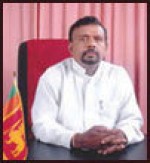
Minister Wildlife S.M.Chandrasena : "I was informed by Diyawadana Nilame of Dalada Maligawa that there is a shortage of elephants for perahera. "The president has advised me to fulfill that requirement so we hope we'd find strong young elephants that are capable of carrying the casket," he is quoted by the BBC as saying.
death whilst being hurriedly translocated, was also from this area.)
“Hence would it be worthwhile then to concentrate on a ‘census’ in the North Central Province and the North Western Province to really gauge the population, demographics and dynamics of these elephants? This could be used to prepare a comprehensive management plan for this area in particular.
Start small
‘While it may make sense to do a coarse assessment of the entire population across the country, with the hope that comparisons can be done later on, to track changes, numbers cannot really be compared, as methods used may vary from time to time. Hence the advice from well qualified experts is that it would be better to start small and slowly, with a well planned and executed effort , than to start with a island wide, bad system,” says Miththapala.
Minister violating law
“Meanwhile environmental lawyer Jagath Gunawardena speaking on Minister Chandrasena’s decision to capture 300 elephants to hand over to temples said, “He has made it public that he will do something that is illegal since the law clearly states that the elephants that are coming to cultivation fields or human settlements could only be captured and resettled. The Minister who has to uphold the law himself is going to violate the law.”
The Director Enviorenmental Conservation Trust, Sajeewa Chamakara told the Lanka Standard he was flummoxed as to how Wild Life Minister S.M. Chandrasena could forcibly domesticate elephants from the wild when he has no legal authority to do so.
“The Minister has forgotten that he is only the temporary custodian of Sri Lanka’s wildlife and the true owners are the general public. The Minister has no right to catch tuskers and calves from the wild for temples and devalayas for his personal political mileage. From 1990s to date more than 150 wild elephants die annually and since of late this number has increased to nearly 200 over the past few years.
Inefficient development projects have displaced the elephant population in certain areas. This has caused a huge threat to the future generation of rare Sri Lankan Asian elephants. Their future is at a risk. At this rate in 100 years we could predict that there won’t be any wild elephants left in the country, Chamakara said.
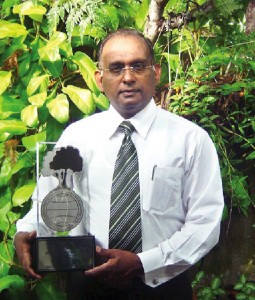
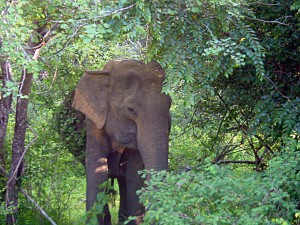
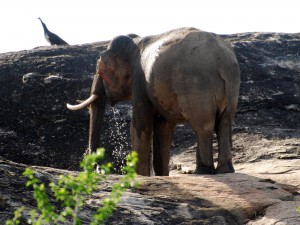
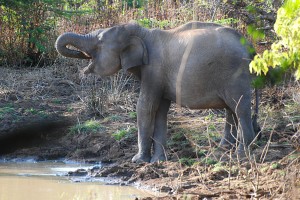
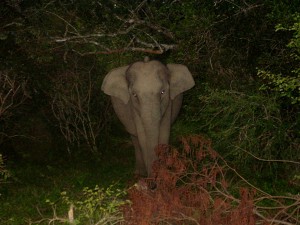

December 21, 2011 at 2:28 am
… [Trackback]…
[…] There you will find 74134 more Infos: lankastandard.com/2011/09/experts-call-elephant-survey-in-sri-lanka-a-farce-roundly-condemns-govt-decision-to-offer-elephants-to-temples […]…
December 21, 2011 at 2:08 am
… [Trackback]…
[…] Read More: lankastandard.com/2011/09/experts-call-elephant-survey-in-sri-lanka-a-farce-roundly-condemns-govt-decision-to-offer-elephants-to-temples […]…
November 10, 2011 at 5:05 pm
Unbelievable…no wait…Sri Lanka anything can happen and most often will
October 6, 2011 at 2:00 pm
I like this post, enjoyed this one thankyou for putting up. unmetered vps | cpanel vps |
October 5, 2011 at 2:40 am
how sad for sri lanka and what irresponsible officials
September 11, 2011 at 1:32 am
Abominable. I read up about the Ringling brothers as well. What is wrong with this government don’t they have any sense of duty to their country
September 11, 2011 at 1:31 am
This is a crying shame. Thank you as usual NIrmala for bringing this into focus, I have seen a lot of international media praising the survey obviously part of the government propaganda for which they pay millions of tax payer money